Creating a robust supplier risk management strategy is essential for today's businesses seeking to navigate the complexities of global supply chains. By identifying potential risks and implementing effective measures, companies can safeguard their operations and maintain strong supplier relationships. It's all about building trust while ensuring that every party involved understands their role in mitigating risk. To dive deeper into the intricacies of establishing a successful strategy, let's explore the steps you can take to enhance your supplier risk management practices!
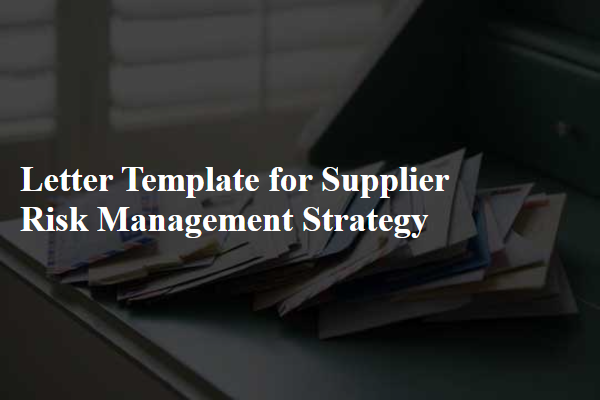
Supplier Evaluation Criteria
Effective supplier evaluation criteria are essential for a robust supplier risk management strategy. Categories such as financial stability, including credit ratings and revenue trends, impact the likelihood of supplier continuity. Operational capability, encompassing production capacity and quality control measures, ensures that suppliers can meet demand consistently. Compliance with regulations, such as ISO certifications or local laws, reduces legal risks. Responsiveness to communication, evaluated through lead times for inquiries and issues, affects overall collaboration. Additionally, assessing the supplier's reputation within the industry through references and reviews provides insight into reliability and performance. Ultimately, employing a comprehensive scoring system based on these criteria facilitates informed decision-making when selecting and managing suppliers.
Risk Mitigation Tactics
Effective risk mitigation tactics are crucial for maintaining supplier relationships and ensuring business continuity in supply chain management. Identifying potential risks, such as financial instability of suppliers, geopolitical events impacting production, and compliance issues related to local regulations, is essential. Implementing diversified sourcing strategies reduces dependency on a single supplier, thereby minimizing the impact of disruptions. Regular audits and assessments of supplier performance can help detect vulnerabilities, while establishing contingency plans ensures readiness for unforeseen events. Collaborating closely with suppliers fosters open communication, enabling proactive identification of risks and joint development of solutions. Additionally, utilizing technology, such as risk management software, enhances data analysis for informed decision-making, reinforcing an organization's resilience against supplier-related challenges.
Communication Protocols
Effective communication protocols are crucial for supplier risk management strategies in various industries, such as manufacturing and telecommunications. Establishing clear lines of communication ensures timely information exchange regarding potential risks, such as supply chain disruptions or compliance issues. Utilizing digital platforms, like Microsoft Teams or Slack, can enhance collaboration among stakeholders, allowing real-time updates on supplier performance metrics. Regular meetings, scheduled quarterly or bi-annually, can facilitate discussions on risk assessments and mitigation plans. Additionally, designating specific points of contact at both the supplier and client organizations can streamline communication processes, ensuring accountability and transparency in risk management initiatives. Implementing these protocols can contribute to greater resilience in operations, minimizing adverse impacts from supplier-related risks.
Performance Monitoring
Performance monitoring in supplier risk management strategies is essential for maintaining quality and ensuring reliability in partnerships. Regular assessment of key performance indicators (KPIs) such as on-time delivery rates--typically measured in percentage terms--encourages suppliers to adhere to agreed timelines. Quality assurance measures, including defect rates, often evaluated through statistical quality control methods, provide insight into product reliability. Engagement tools like Supplier Scorecards facilitate transparent communication of standards between businesses and suppliers located in various regions, ensuring alignment with performance expectations. Timely evaluations (quarterly or bi-annual) help identify potential risks early, allowing corrective actions to be implemented promptly, thereby preserving the integrity of the supply chain. Regular audits, ideally incorporating both on-site visits and documentation reviews, enhance accountability and promote continuous improvement of supplier performance.
Contingency Planning
Contingency planning is a critical component of supplier risk management strategies, focusing on preparation for unexpected disruptions in the supply chain. This proactive approach includes establishing alternative suppliers for essential materials, like steel or microchips, ensuring production continuity during unforeseen events, such as natural disasters or geopolitical tensions. Specific locations, such as manufacturing hubs in China or distribution centers in the United States, are analyzed for risks that could impact service levels. Additionally, businesses may implement a risk assessment matrix to categorize risks by likelihood and impact, allowing for prioritized action plans. Regular drills and simulations, mirroring real-world scenarios, foster an agile response team capable of mitigating risks effectively. Thorough documentation of all contingency plans is essential, providing clarity and direction during crises.

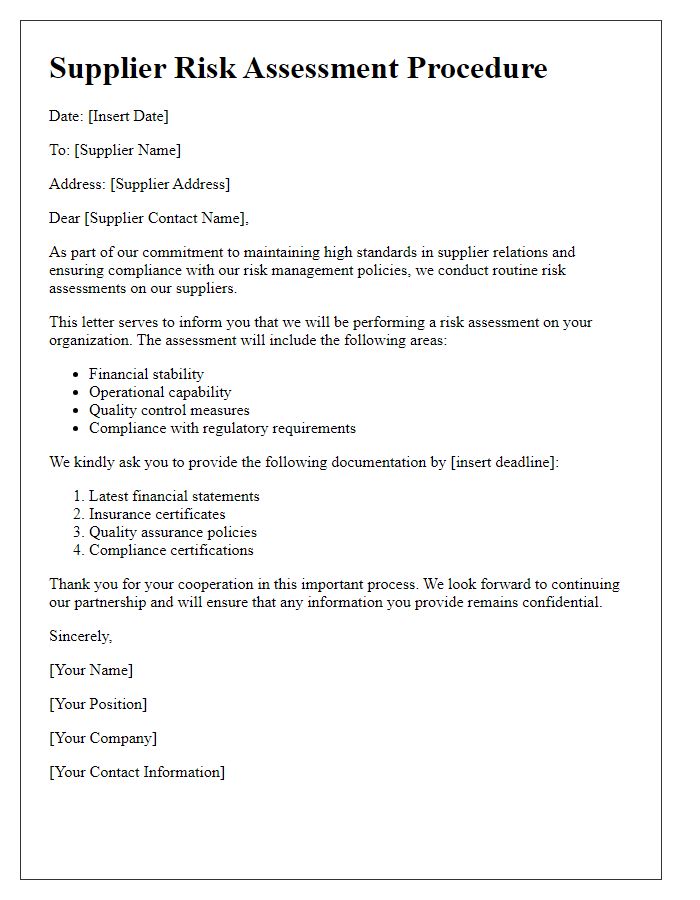
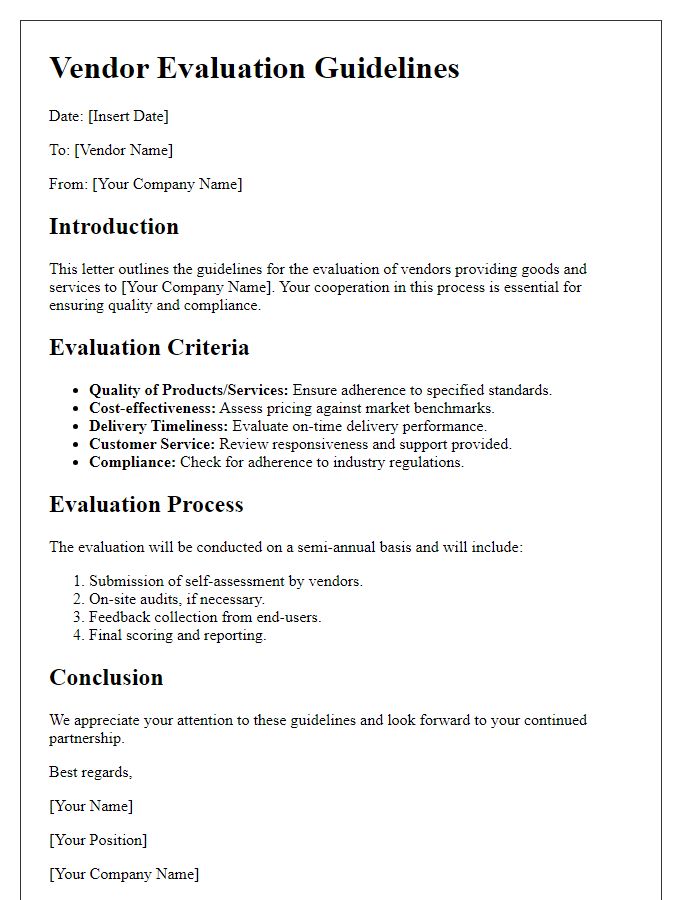
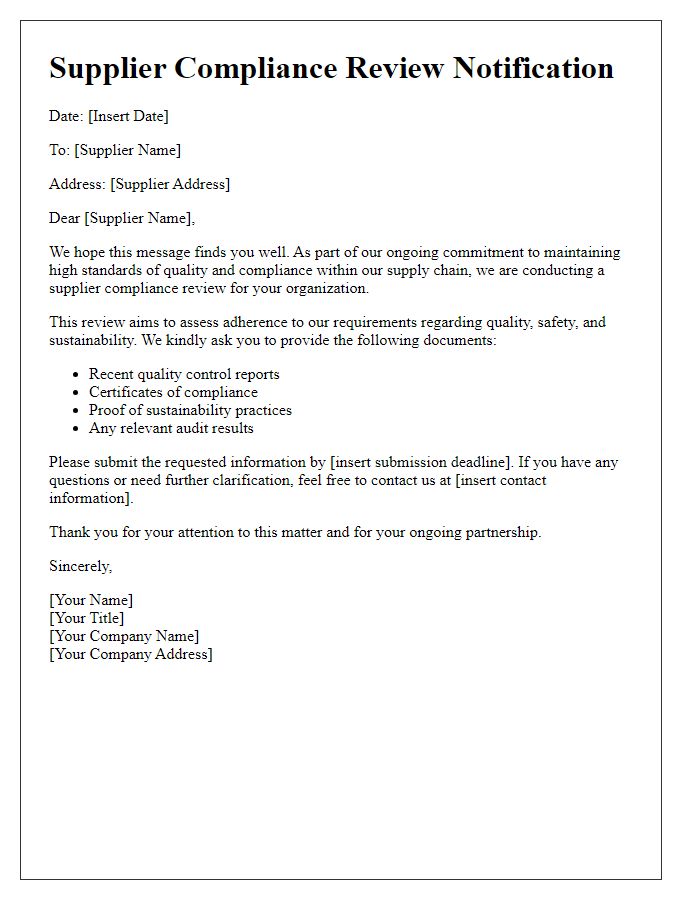
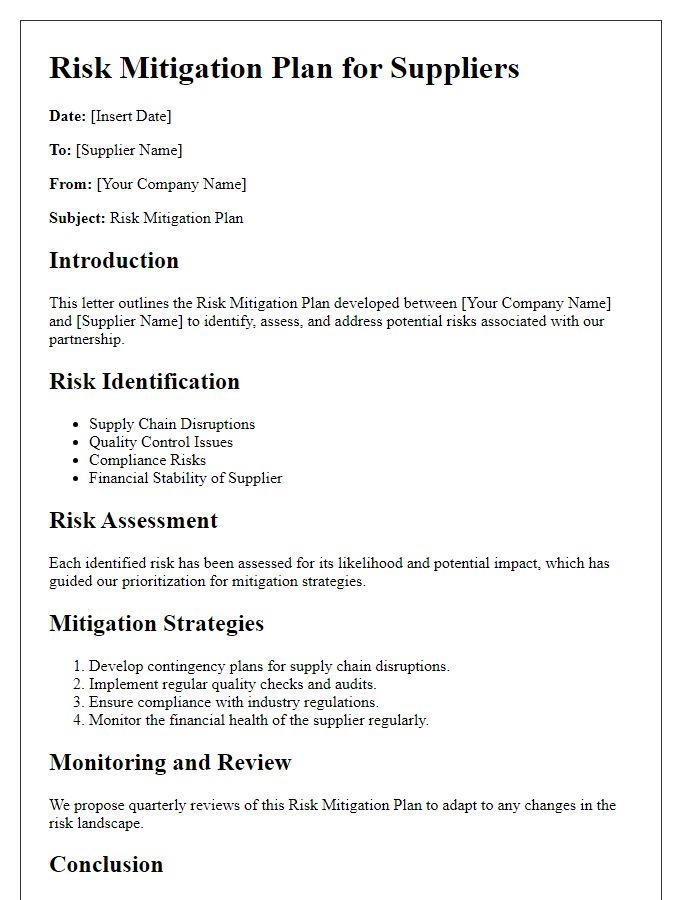
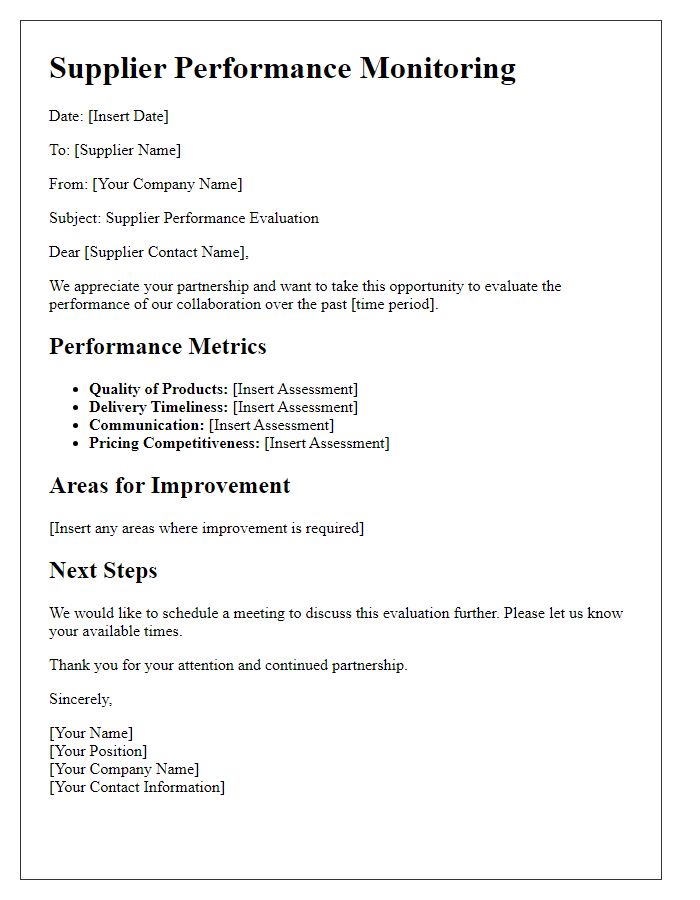
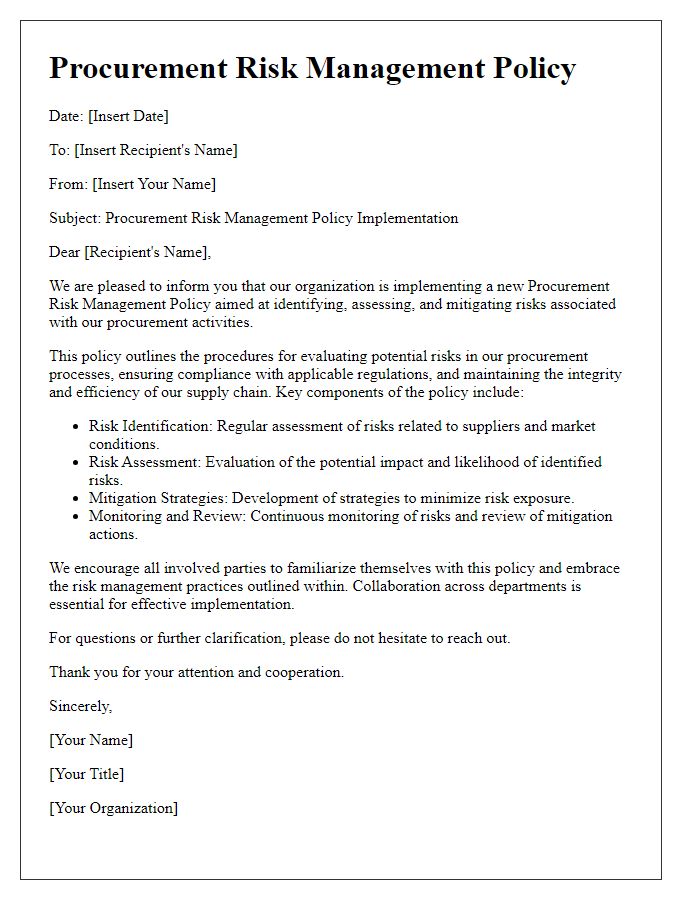
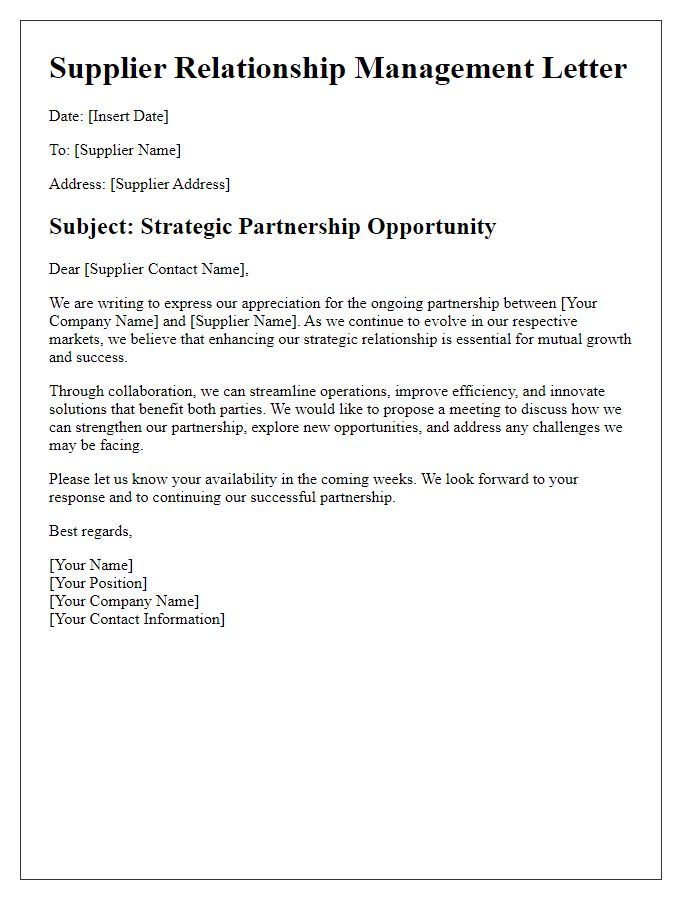
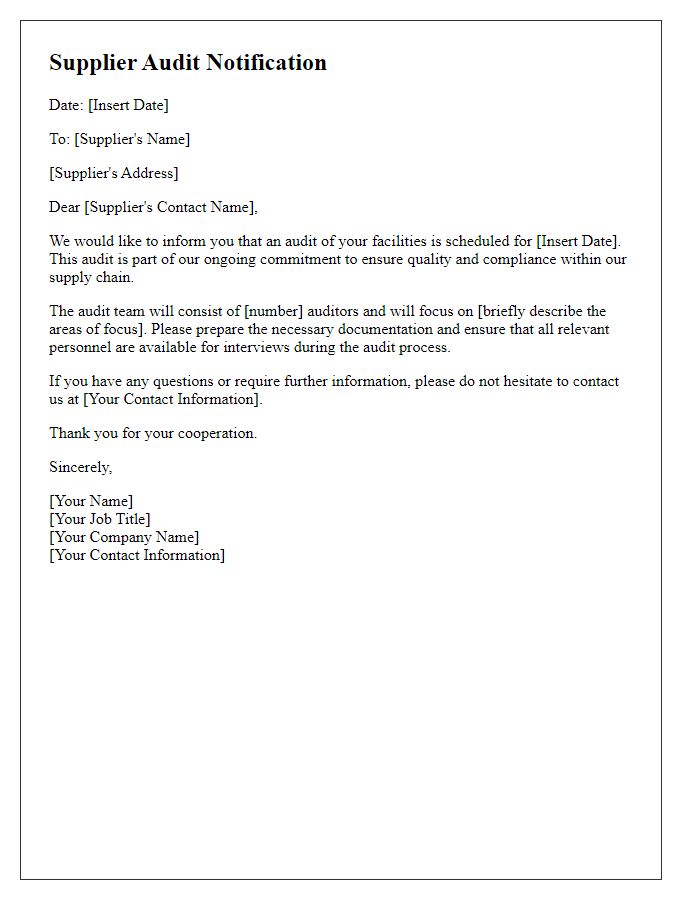
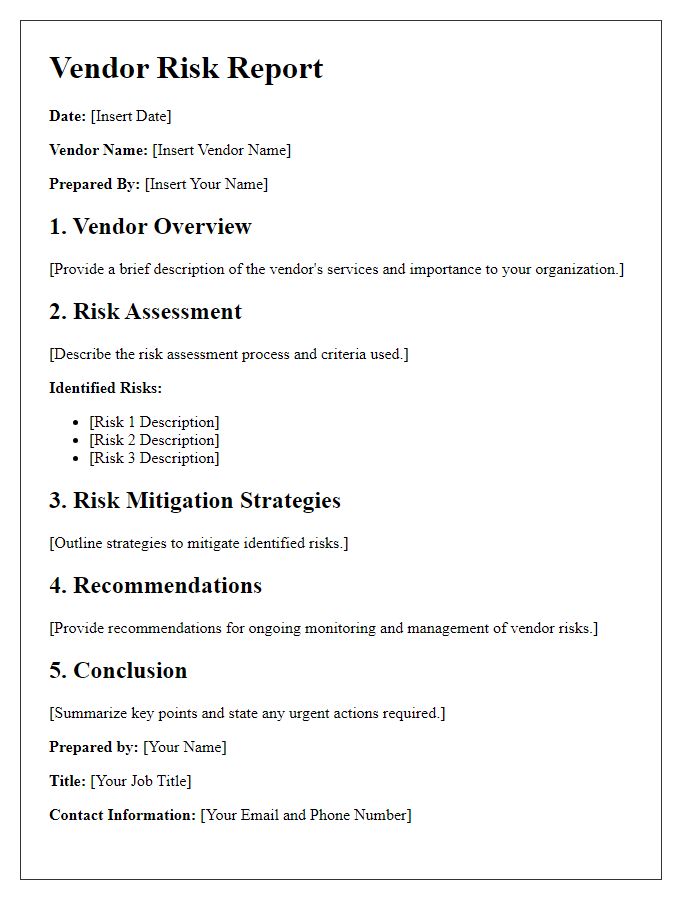



Comments